‘The Zone of Interest’ Cinematographer and TIFF Variety Artisan Award Winner Lukasz Zal on the Quest to Capture Life’s ‘F—ing Beautiful Moments’
- Oops!Something went wrong.Please try again later.
- Oops!Something went wrong.Please try again later.

When U.K. writer-director Jonathan Glazer approached Polish cinematographer Łukasz Żal about “The Zone of Interest,” a provocative Holocaust drama adapted from a 2014 novel by Martin Amis, he had a bold proposition for the film, which centers on the domestic life of an Auschwitz commandant and his family living in the shadow of the notorious concentration camp. What if, Glazer suggested, they shoot the scenes inside the Höss family home without a single camera on set?
Working on location, production designer Chris Oddy and his crew built a replica of the camp commandant’s real-life house. Then Oddy, Glazer, Żal and first A.D. Marc Wilson got to work, outfitting the set to accommodate the director’s daring gambit, which would allow the actors to move about the house unobstructed and offer a more natural portrait of the family’s everyday life.
More from Variety
Polish Filmmakers Wrestle With the Weight of History, Even As It Unfolds Before Their Eyes
A Mother's Quest for Justice in the Arabian Gulf Takes Centerstage in Toronto Selection 'Yellow Bus'
“We drilled the house like Swiss cheese,” Żal says. “We were shooting 10 cameras at the same time. I wanted to have everything hard-wired — no remote stuff. The idea was to have no film crew on set. Cameras were hidden, if it was possible. There was no film gear. No light. No flags, no tripods. Nothing.” The cameras were operated by focus pullers stationed in the basement. The director and cinematographer watched playback from a control room fashioned from a shipping container nearby.
Żal describes the shoot as a “huge technological challenge,” but his widely praised work on the film has again made the two-time Academy Award nominee a frontrunner for this year’s Oscar race. Premiering at the Cannes Film Festival, where it won the Grand Prix and garnered rave reviews, “The Zone of Interest” is playing this week in Toronto fresh off its North American premiere at Telluride.
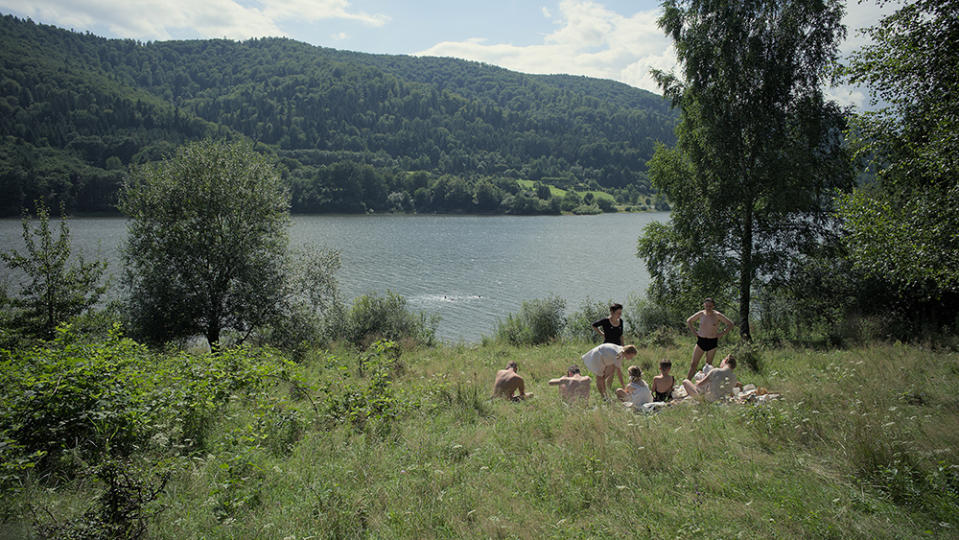
Żal will be at the prestigious Canadian fest to receive the TIFF Variety Artisan Award, which recognizes a distinguished creative who has excelled at their craft and made an outstanding contribution to cinema and entertainment. In announcing the selection of Żal — who was likewise feted by this magazine at the Santa Barbara Intl. Film Festival in 2019 — Variety’s senior artisans editor, Jazz Tangcay, noted that “with his most recent film, ‘The Zone of Interest,’ Łukasz continues to raise the bar for inventive and avant-garde cinematography.”
When he speaks to Variety ahead of Toronto, Żal has recently returned from Bangkok. Sporting sunglasses and a fitted gray t-shirt and nursing an extra-large coffee, he’s pulled into a rest station on a newly paved stretch of highway somewhere between Silesia, where he was prepping a commercial shoot, and the capital, Warsaw. Żal speaks quickly, off the cuff, circling back to clarify a point before taking the conversation in an entirely different direction. Pausing mid-sentence, coffee awkwardly balanced in the palm of his hand, he leans forward to wipe his phone’s screen with the edge of his shirt. “This is me,” he says, laughing. “This is chaos, and from this chaos, something appears.”
The cinematographer is making the most of some unexpected downtime between major projects. Had things gone according to plan, Żal would’ve been on location in the Canary Islands right now shooting “The Island,” his third collaboration with Academy Award-winning director Paweł Pawlikowski (“Ida,” “Cold War”). But the production was shut down in late May on the eve of the SAG-AFTRA strike, just as principal photography was set to begin; according to reports, the film’s bonders balked in the face of the impending work shutdown and its potential impact on the availability of stars Joaquin Phoenix and Rooney Mara.
There’s no timetable yet for when production will resume. In the meantime, Żal is shooting commercials instead of signing onto another feature film; he wants to be ready should his pal Paweł pick up the phone and tell him to pack his things for Tenerife. “I always try to allow myself to have this kind of time. I’m not able to jump from one project to another one. It’s impossible for me. I’m not this kind of person,” he says. “In the period of prepping…I don’t like to do anything else. I just want to be completely immersed in the film. Watch films, read books, walk, listen to music.”
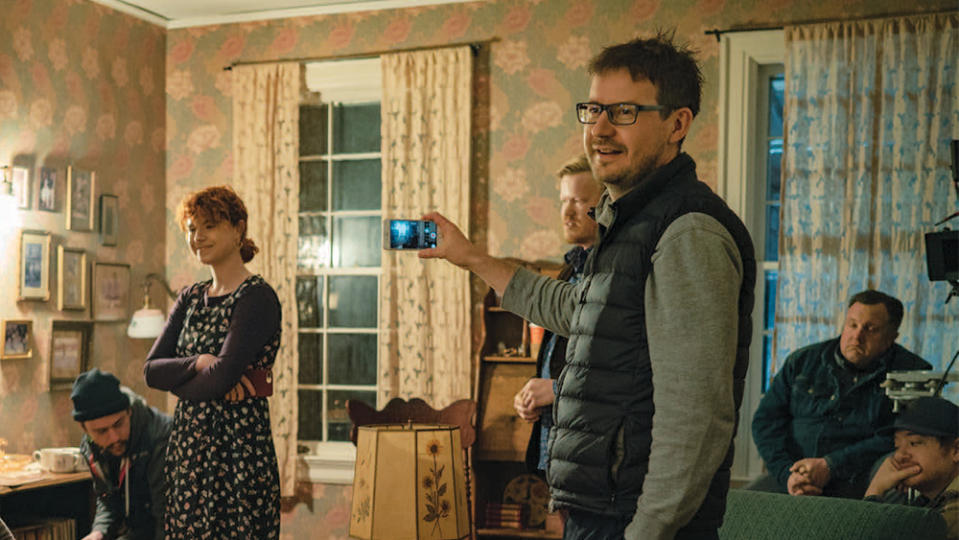
That approach allows Żal to stay rooted in the world of each movie he shoots, a world he painstakingly creates through an intensely collaborative effort with each of his directors. In the past decade, the 42-year-old has worked with acclaimed filmmakers including Pawlikowski, Academy Award winner and three-time nominee Charlie Kaufman (“I’m Thinking of Ending Things”), Swedish director and festival darling Magnus von Horn (“The Here After”) and maverick Russian filmmaker Alexey German Jr. (“Dovlatov”).
That impressive and eclectic oeuvre has made Żal one of the most sought-after cinematographers in the world today, each film a mile-marker on what might’ve once seemed like an impossible journey. “Every film is very special for me,” he tells Variety. “Every film is like a chapter…for this moment in my life.”
Learning to capture emotions, fleeting moments
Żal grew up in Manowo, a small village in northwestern Poland, in what he describes as “a beautiful area with lakes and forests.” His father owned a transport company; his mother, a homemaker, busied herself with housekeeping and gardening while she raised her two sons. “When I was younger, we didn’t have money,” he says. “My house was not the house with a piano in the middle and poetry.” He credits his mother, a “sensitive person,” with introducing him to reading and other creative pursuits. Although she strictly monitored his time in front of the television — “She was afraid that watching TV destroyed my eyes,” he says — Żal nevertheless says she planted in him “this way of how you look at the world.”
His father was an amateur photographer, a self-appointed family historian who took photos and home videos at family events. “He liked gadgets. There were always cameras in our house,” Żal says. In his collection was an old six-by-six, medium-format camera manufactured by the Polish company Start that was the first camera produced in the country after World War II. “It was very out of focus. It was almost like a pinhole camera. The image was so crazy,” Żal recalls. “He gave me this camera, and I started taking pictures.”
The young Żal quickly realized he had a passion for photography. Before long, he had stepped into his father’s shoes, chronicling the family’s holidays and summer vacations and other milestones. One day, while filming a cousin’s communion ceremony, Żal captured a giant crucifix in his viewfinder. “There was a moment — there was a cross with Jesus Christ, and at the back, there was fluorescent light,” he recalls. “I slowed the shutter to one-fourth or one-sixth of a second, and I was doing zooms, so everything was blurred. I would zoom in and out, and there was Jesus Christ, and the image was blurred. Everything was crazy.” He laughs. “I just wanted to show how [my cousin] was in this sacred moment — how she feels this magic moment when she [received] Christ.”
It was something like a religious moment for the young photographer, too. “That was the first time in my life that I really felt I was transferring something with images,” he says.
Żal fell in with an arty crowd in high school, where he began to discover poetry and music and cinema. He enrolled in a workshop led by lecturers from the celebrated Łódź Film School and learned to make analog prints and develop film. At night, the lecturers set up a 35mm projector and screened movies in the school gymnasium. “We were going to bed three, four o’clock every night, watching films,” Żal recalls. “That was the moment I fell in love with cinema, with cinematography.”
When he later enrolled in the prestigious school, he chose to study still photography, but what he had in passion, he lacked in scholastic aptitude; he flunked his first photography course and became the butt of his classmates’ jokes. During an exam, he recalls, a teacher tried to steer him toward other pursuits, saying: “Mr. Żal, there’s so many beautiful things to do in life, and you want to do photography. Think about if this is really what you want to do.” Żal wouldn’t be dissuaded; he was “taking pictures like crazy,” watching movies, studying the greats — Tarkovsky, Kurosawa, Scorsese — intuiting the lessons that he wasn’t learning in the classroom. He wanted to understand how “to tell a story, to capture some emotions, some fleeting moments,” he says.
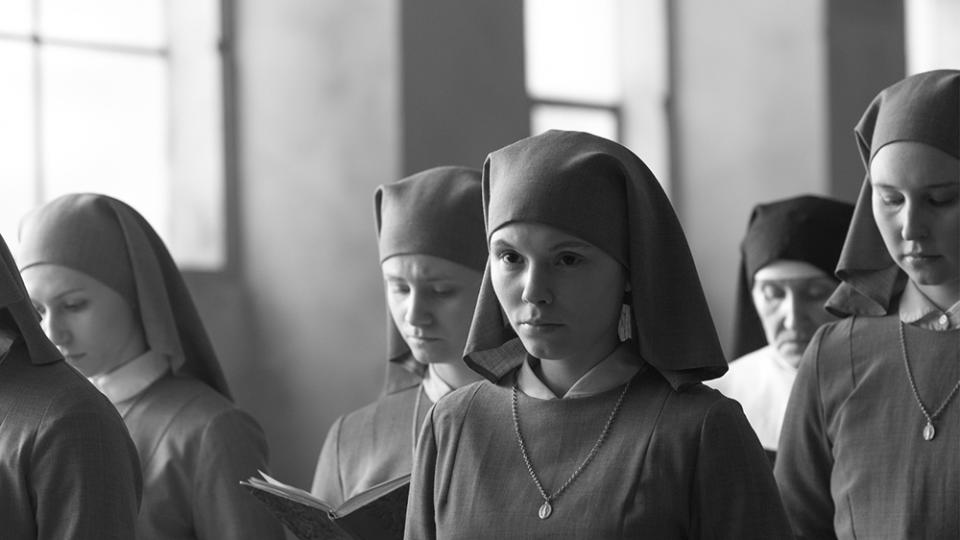
His artistic ambitions, however, were thwarted by the cold reality of life after film school; Żal had to take commercial work as a cameraman to pay the bills. He was waking up at 6 a.m. to drive to industrial areas on the outskirts of Warsaw with a cheap handheld camera, shooting low-budget videos for corporate clients to make ends meet. Work was steady, but it left him creatively hamstrung. “I was so frustrated,” he says. “My life was a nightmare.”
Then, Żal was involved in a grisly car accident that left him with two broken legs. During a long period of convalescence, he considered putting down his camera and finding a different line of work, setting himself a one-year deadline to turn things around. On his first job back, still hobbling on one leg, he shot a short documentary, “Paparazzi,” with his friend, the director Piotr Bernas. The 30-minute film, about celebrity-chasing photographers in the Polish media industry, would go on to win the Golden Frog at the prestigious Camerimage Film Festival.
It would mark a turning point in Żal’s life. “Sometimes I believe there is a special power protecting us,” he says. He remembers telling himself: “Maybe just earning money is not the thing you should do. Maybe God hit you in the head and said, ‘Don’t think only about money.’”
Every film “an amazing journey“
Żal would soon find the artistic satisfaction he was longing for on the set of his first feature film, “Ida,” Pawlikowski’s 1960s-set drama about a Polish nun’s discovery of her Jewish past. Hired as a camera operator, he was suddenly asked to step in when the film’s cinematographer, regular Pawlikowski collaborator Ryszard Lenczewski, fell ill.
Whatever cold feet he might have felt at the time, Żal looks back a decade later and recalls above all a sense of freedom and possibility. “I didn’t care about nothing — about money, nothing,” he says. “I was so happy, just being in the process of shooting this film.”
Żal’s work on “Ida,” for which he received a co-credit as director of photography, earned him an Academy Award nomination, and the movie scooped the Oscar for best foreign-language film. Four years later, he would again team up with Pawlikowski — and earn another Oscar nod — for the jazz-inflected period drama “Cold War,” a sweeping portrait of a star-crossed romance spanning 15 years after World War II.
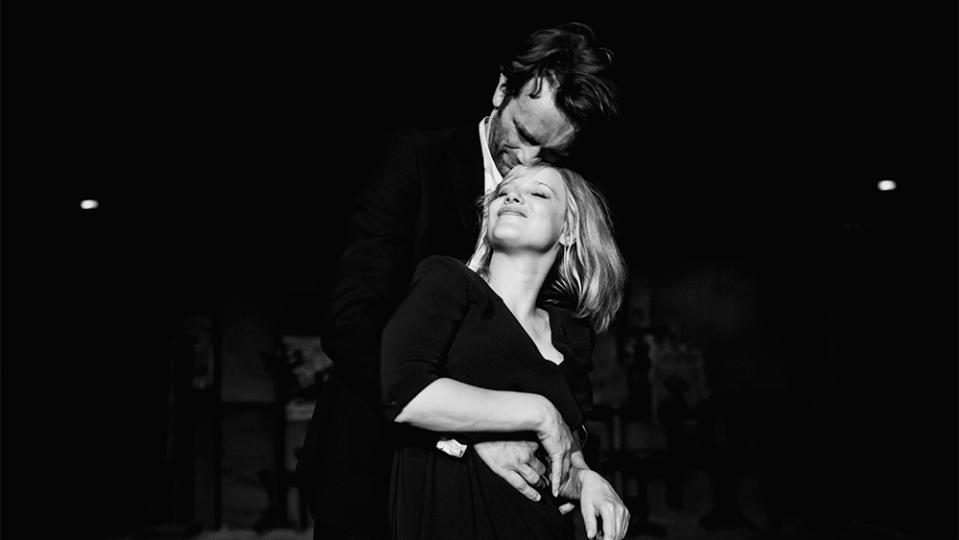
Though a departure in tone and style from their first collaboration, “Cold War” was also shot in that film’s signature monochrome 4:3 aspect ratio, each frame meticulously composed — a throwback, perhaps, to Żal’s early passion for still photography. Brought on as the film’s cinematographer from day one, “Cold War” afforded Żal and Pawlikowski time to develop a shared sensibility and create a cinematic language together.
“With Paweł, it’s always a process,” says Żal. “We’re talking a lot, we’re watching some [movies as] references, taking pictures, going for recces. And then we just go through the script, discussing page by page.” They debate camera placements for individual shots, the motivation of each character in every scene — “Always, everything comes from the story,” he says — Żal scribbling ideas in one of his many Moleskine notebooks. (He later goes back to type his notes because, by his own admission, his handwriting is “terrible.”) “And when we finish, we start from the beginning. Once more, second time, third time, fourth. Every time, it’s evolving.”
By the time their third collaboration, “The Island,” was shut down earlier this year, Żal and Pawlikowski had spent several months in pre-production. The film is loosely based on a true story about an American couple who build a secluded paradise on a deserted island to escape civilization.
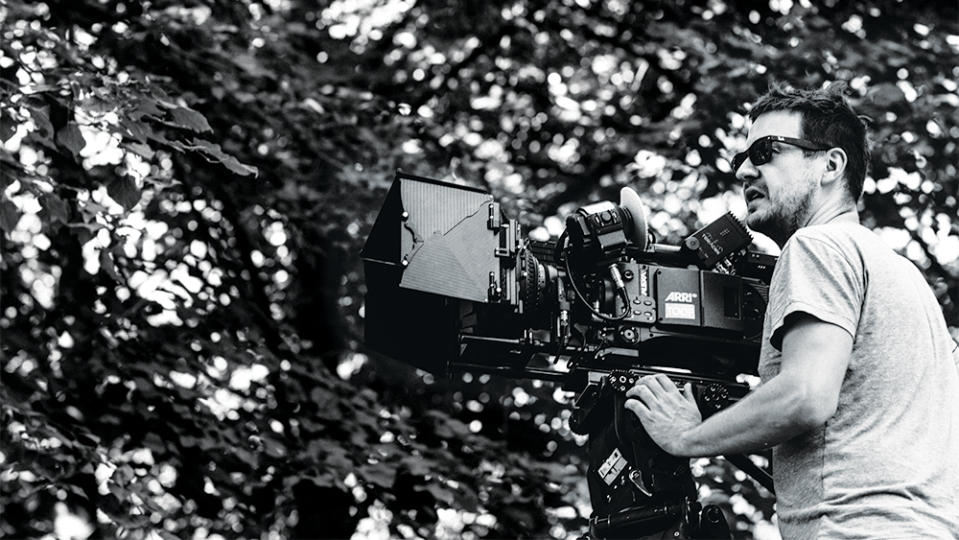
As with their previous collaborations, “The Island” will be shot in black and white, but Żal is reluctant to share many details, saying only that he drew on the spectacular volcanic landscapes of the Canary Islands to capture their staggering natural beauty. “In Tenerife, in Lanzarote, you can feel this in such an amazing way, because of the volcanoes, the rocks, the ocean,” he says. “You are so in awe looking at those rocks, those mountains. You realize, ‘Wow, I’m so not important compared to this amazing world.’”
As he waits out the Hollywood strikes and ponders this moment on the cusp of middle age, Żal is feeling reflective. “I was so lucky that I met Paweł, Jonathan, Charlie Kaufman, Magnus von Horn. I love to shoot with those directors — such great people, wise people,” he says. “With those kinds of directors, every film is like an amazing journey where you learn something about yourself. It’s a transcendent thing.”
He recalls that afternoon at his cousin’s communion — a literal come-to-Jesus moment — and the emotion that still sweeps over him whenever he has a camera in his hand. “I’m getting older, but when I’m shooting, I feel always the same,” he says. “When you’re shooting something beautiful, I love this moment. When you feel that this magic moment is happening — in the lens, in this particular moment, everything [comes together]. Actors, production design, weather, rain, sun, elements,” he continues. “And then you think, ‘Wow, this is it. This is the moment. I really captured the fucking beautiful moment. I really captured a piece of truth. A piece of life.’”
Best of Variety
Sign up for Variety’s Newsletter. For the latest news, follow us on Facebook, Twitter, and Instagram.

